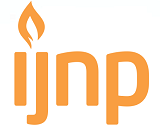UJI BEDA EFEK GUIDED IMAGERY DAN ETHYL CHLORIDE TERHADAP NYERI SAAT PEMASANGAN INFUS PADA ANAK
DOI:
https://doi.org/10.18196/ijnp.v1i2.3440Keywords:
Ethyl chloride, Guided imagery, Nyeri pada anak, Pemasangan infusAbstract
Abstrak
Pemasangan infus merupakan tindakan invasif awal yang seringkali dilakukan di Instalansi Gawat Darurat (IGD) guna memenuhi kebutuhan cairan dan elektrolit. Tindakan tersebut dapat menyebabkan nyeri pada anak. Nyeri yang tidak ditangani dapat mengakibatkan dampak yang serius, baik jangka pendek maupun jangka panjang. Perawat perlu menggunakan metode yang tepat untuk mengurangi nyeri pada anak saat pemasangan infus guna meminimalkan dampak tersebut. Tujuan penelitian ini untuk menganalisis perbedaan antara intervensi guided imagery dan ethyl chloride terhadap skor nyeri anak saat pemasangan infus. Penelitian ini menggunakan desain penelitian semu (quasi experiment) dengan postest kelompok kontrol nonekuivalen (after only onequivalent control group design). Jumlah total responden 30 anak yang diambil dengan teknik consecutive sampling. Skor nyeri diukur dengan Wong-Baker face pain rating scale dan dianalisis secara statistik dengan uji post hoc Mann-whitney. Hasil menunjukkan nilai ρ sebesar 0,530 (ρ>0,05) artinya tidak terdapat perbedaan skor nyeri yang bermakna antara kedua intervensi. Hal ini menunjukkan bahwa Guided imagery dapat dijadikan alternatif penatalaksanaan nyeri non farmakologi dan non invasif pada anak saat pemasangan infus di IGD.
Abstract
The infusion procedures are the first invasive treatment conducted in Emergency Room (ER) to fullfil the need of fluid and electrolyte. Those treatments can cause pain on children. The untreated pain can cause any serious effect, both in short term and long term. Nurses need to use the appropriate method to decrease the pain on children when infusion is installed to decrease those effects. This study is aimed to analyze the differences of children pain score when having infusion procedures with guided imagery and ethyl chloride intervention. This study used quasi experimental study with 30 children as participants by using non equivalent control group design. The group was taken by using consecutive sampling technique. The data was collected by using Wong-Baker face pain rating scale and analyzed by post hoc Mann-Whitney test. The result showed that ρ value were 0,530 (ρ>0,05), of which can be concluded that there is no significant difference on the two interventions. Guided imagery could be used as an alternative pain management for non farmachology and non invasive on children when having the infusion procedures at ER.
References
Andarmoyo, S. (2013). Konsep dan proses keperawatan nyeri. Jogjakarta: Arruz Media.
Apóstolo, J. L. A., & Kolcaba, K. (2009). The effects of guided imagery on comfort, depression, anxiety, and stress of psychiatric inpatients with depressive disorders. Archives of Psychiatric Nursing, 23(6), 403–411. doi:10.1016/j.apnu.2008.12.003
Creswell, J. W. (2010). Research design: Pendekatan kualitatif, kuantitatif, dan mixed. Jogjakarta: Pustaka Pelajar.
Dahlan, M. S. (2009). Besar sampel dan cara pengambilan sampel dalam penelitian kedokteran dan kesehatan. Jakarta: Salemba Medika.
Glasper, A. & Richardson, J. (2006). A textbook of children’s and young people’s nursing. Philadelpia: Elsevier
Hockenberry, M. J., & Wilson, D. (2009). Wong’s essentials of pediatric nursing (8th ed.). St. Louis Missouri: Mosby Elsvier.
Ismanto, A. Y. (2011). Studi komparatif pemberian ASI dan topikal anestesi terhadap respon nyeri imunisasi pada bayi di Puskesmas Bahu Manado. Universitas Indonesia. Retrieved from http://lontar.ui.ac.id/opac/themes/libri2/detail.jsp?id=20280168&lokasi=lokal
Kozier, & Erb’s. (2012). Fundamentals of nursing. America: Person PLC.
Mariyam, & Widodo, S. (2012). Pengaruh guided imagery terhadap tingkat nyeri pada anak usia 7-13 tahun saat dilakukan pemasangan infus di RSUD Kota Semarang. In Seminar Hasil-Hasil Penelitian (p. 978 (6), 6). Semarang: LPPM UNIMUS.
Novianti, Novayelinda, R., & Utomo, W. (2012). Pengaruh pemberian eutetic mixture of local anestetic terhadap penurunan nyeri pada anak prasekolah yang dilakukan pengambilan darah vena. Universitas Riau. Retrieved from http://repository.unri.ac.id/bitstream/123456789/1889/1/MANUSCRIPT.pdf.
Potter, A. P., & Perry, G. P. (2006). Buku Ajar Fundamental keperawatan. Jakarta: EGC.
Siregar, I. A. (2007). Perbandingan efektifitas anestesi oles dengan anestesi semprot dalam menurunkan intensitas nyeri pada pungsi arteri. Universitas Sumatera Utara. Retrieved from http://repository.usu.ac.id/bitstream/123456789/6263/1/Ira Aliza1.pdf
Van Der Veek, S. M. C., Derkx, B. H. F., Benninga, M. A., Boer, F., & de Haan, E. (2013). Cognitive behavior therapy for pediatric functional abdominal pain: A randomized controlled trial. Pediatrics, 132(5), e1163–e1172. doi:10.1542/peds.2013-0242
Downloads
Published
Issue
Section
License
License
Articles published in the IJNP (Indonesian Journal of Nursing Practices) are licensed under a Attribution 4.0 International (CC BY 4.0) license. You are free to:
- Share — copy and redistribute the material in any medium or format.
- Adapt — remix, transform, and build upon the material for any purpose, even commercially.
This license is acceptable for Free Cultural Works. The licensor cannot revoke these freedoms as long as you follow the license terms. Under the following terms:
Attribution — You must give appropriate credit, provide a link to the license, and indicate if changes were made. You may do so in any reasonable manner, but not in any way that suggests the licensor endorses you or your use.
- No additional restrictions — You may not apply legal terms or technological measures that legally restrict others from doing anything the license permits.
Copyright
Authors who publish with IJNP (Indonesian Journal of Nursing Practices) agree to the following terms:
- Authors retain copyright and grant IJNP (Indonesian Journal of Nursing Practices) the right of first publication with the work simultaneously licensed under an Attribution 4.0 International (CC BY 4.0) that allows others to remix, adapt and build upon the work with an acknowledgment of the work's authorship and of the initial publication in IJNP (Indonesian Journal of Nursing Practices).
- Authors are permitted to copy and redistribute the journal's published version of the work (e.g., post it to an institutional repository or publish it in a book), with an acknowledgment of its initial publication in IJNP (Indonesian Journal of Nursing Practices).















